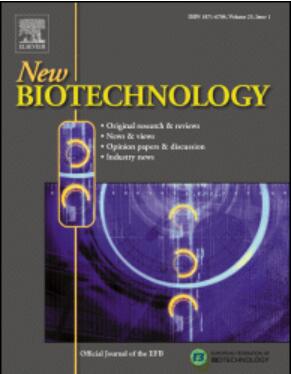利用CRISPR/Cas9介导的多基因突变培育无色透明罗非鱼。
IF 4.9
2区 生物学
Q1 BIOCHEMICAL RESEARCH METHODS
引用次数: 0
摘要
从小型鱼类(medaka,斑马鱼和鳉鱼)中获得透明突变鱼,并经常用作生物学和医学研究的实验模型。但是,通过基因编辑,在中型或大型鱼类身上从未培育出透明鱼。本研究首次通过杂交获得无黄细胞、无红细胞和无色素黑细胞的突变体,形成tyrb;csf1ra双突变罗非鱼。随后,利用CRISPR/Cas9基因编辑技术对pnp4a和tfec进行突变,获得了缺乏反射血小板且无可见虹膜团的单突变体,在pnp4a突变体中观察到虹膜团的恢复,而在tfec突变体中未观察到虹膜团的恢复。此外,我们还发现tfec突变导致黑素细胞数量和黑素细胞/红细胞直径减少。最后,通过双突变体和单突变体杂交,将tyrb;csf1ra;pnp4a(命名为琥珀)和tyrb;csf1ra;tfec(命名为红宝石)进行三突变,获得透明的三突变纯合子,不可见色素细胞。这两个突变系分别在受精后60天和120天不再透明,原因是前者的虹膜团恢复,后者的体壁增厚。综上所述,本研究通过多基因突变聚集和杂交,获得了两条无可见色素细胞的透明系。该透明鱼适合在体内成像,是目前唯一通过基因编辑获得的中型透明鱼。本文章由计算机程序翻译,如有差异,请以英文原文为准。
Creation of colorless transparent tilapia using CRISPR/Cas9 mediated multi-gene mutation
Transparent mutant fish have been obtained from small-sized fish (medaka, zebrafish, and killifish), and are often used as experimental models in biological and medical research. However, transparent fish have never been created in medium- or large-sized fish through gene editing. In this study, mutants without xanthophores, erythrophores and pigmented melanophores were first obtained by crossing to form tyrb;csf1ra double mutant tilapia. Subsequently, single mutants lacking reflective platelets without visible iridophores were obtained by mutation of pnp4a and tfec using CRISPR/Cas9 gene editing, the recovery of iridophores were observed in pnp4a mutants but not in tfec mutants in the later stage. In addition, we also found that tfec mutation led to a decrease in number of melanophores and diameter of melanophores/erythrophores. Finally, transparent triple mutant homozygotes without visible pigment cells were obtained by triple mutation of tyrb;csf1ra;pnp4a (named amber) and tyrb;csf1ra;tfec (named ruby), through crossing of double and single mutants. The two mutant lines were no longer transparent at 60 dpf (days post fertilization) and 120 dpf, respectively, due to the recovery of iridophores in the former, and thickening of the body wall in the latter. In summary, this study created two transparent lines without visible pigment cells through aggregation of multiple gene mutation and crossing. The transparent fish is suitable for in vivo imaging, and is currently the only medium-sized transparent fish obtained through gene editing.
求助全文
通过发布文献求助,成功后即可免费获取论文全文。
去求助
来源期刊

New biotechnology
生物-生化研究方法
CiteScore
11.40
自引率
1.90%
发文量
77
审稿时长
1 months
期刊介绍:
New Biotechnology is the official journal of the European Federation of Biotechnology (EFB) and is published bimonthly. It covers both the science of biotechnology and its surrounding political, business and financial milieu. The journal publishes peer-reviewed basic research papers, authoritative reviews, feature articles and opinions in all areas of biotechnology. It reflects the full diversity of current biotechnology science, particularly those advances in research and practice that open opportunities for exploitation of knowledge, commercially or otherwise, together with news, discussion and comment on broader issues of general interest and concern. The outlook is fully international.
The scope of the journal includes the research, industrial and commercial aspects of biotechnology, in areas such as: Healthcare and Pharmaceuticals; Food and Agriculture; Biofuels; Genetic Engineering and Molecular Biology; Genomics and Synthetic Biology; Nanotechnology; Environment and Biodiversity; Biocatalysis; Bioremediation; Process engineering.
 求助内容:
求助内容: 应助结果提醒方式:
应助结果提醒方式:


